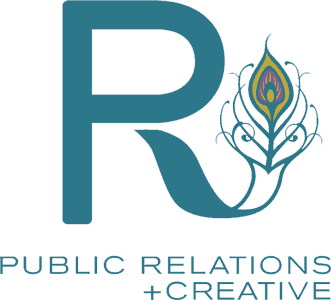In a digital landscape that moves at the speed of light, the rise of fake news has become a significant challenge for public relations (PR) professionals. Fake news presents new and growing challenges to PR efforts, with misinformation spreading rapidly across social media platforms and even traditional news outlets. The growing public distrust of media and the need to safeguard brand reputation have transformed how PR firms operate, making it critical to understand and navigate this new reality.

The Rise of Fake News
Fake news, often defined as false or misleading information presented as legitimate news, has gained traction due to the widespread use of social media and the internet’s ability to disseminate information instantly. A recent study found that falsehoods reach 1,500 people six times faster than the truth. This phenomenon is not just a problem for the general public but also for brands and PR firms tasked with maintaining a positive image in an increasingly skeptical world.
The ease with which fake news can be created and shared has led to a significant rise in misinformation. A single tweet, blog post, or video can go viral within minutes, reaching millions of people before any fact-checking can occur. This speed and reach pose a unique challenge for PR professionals, who must now be more vigilant than ever in monitoring the digital landscape for potential threats to their clients’ reputations.

Public Distrust of Media
As fake news continues to expand its reach, public trust in the media has eroded. According to a recent survey by Gallup, 29% of U.S. adults have “not very much” trust, while a record-high 39% register “none at all.” That means nearly four in 10 Americans completely lack confidence in the media. This growing distrust means that even legitimate news sources can struggle to maintain credibility, impacting the effectiveness of PR campaigns.
For PR firms, this distrust presents a double-edged sword. On the one hand, working with credible media outlets is necessary to get clients’ messages across. On the other hand, there is an increasing awareness that audiences may be skeptical of any news, making it harder to build and maintain trust. PR professionals must now go beyond traditional media relations, focusing on transparency, authenticity, and building direct relationships with their target audiences.

The Impact of Fake News on Pitching
In this environment of skepticism and misinformation, pitching to media outlets has become more complex. Journalists are inundated with pitches, many of which they disregard due to the sheer volume of content they receive. With the added burden of ensuring that the information they report is accurate and trustworthy, journalists may be even more selective about the stories they cover.
For PR professionals, this means that pitches must be more compelling, data-driven, and backed by credible sources. A well-crafted pitch is no longer enough; it must be supported by evidence, expert opinions, and verifiable data to stand out. Moreover, building long-term relationships with journalists and media outlets has become essential to ensure that pitches are not only heard but also trusted.
PR firms must also be prepared for the possibility that their pitches might be scrutinized more closely than ever before. Any hint of exaggeration or inaccuracy can lead to a pitch being rejected or, worse, damage the credibility of the brand and the PR firm itself. This necessitates a higher standard of ethical communication, where transparency and honesty are paramount.
Protecting Brand Reputation
The rise of fake news has also forced PR firms to take a more proactive role in protecting their clients’ reputations. In the past, managing a brand’s reputation was primarily about controlling the narrative through positive media coverage and responding to crises. Today, it involves constant vigilance and the ability to respond quickly to misinformation before it can take hold.
Crisis management has become a critical component of PR strategies in the age of fake news. PR firms must be prepared to address false claims, correct misinformation, and communicate clearly with the public to mitigate any damage to their clients’ reputations. This often requires a multi-channel approach. Leveraging social media, press releases, and direct communication with stakeholders to ensure the truth prevails.
Moreover, PR professionals must educate their clients about the risks of fake news and the importance of maintaining a strong, authentic brand presence. By fostering open communication and transparency, brands can build trust with their audiences, making them less susceptible to the influence of fake news.
The rise of fake news has impacted the field of public relations, creating new challenges and opportunities for PR professionals. As public distrust of media grows, PR firms must adapt by enhancing the credibility of their pitches, protecting brand reputations more vigilantly, and fostering direct, transparent relationships with their audiences. In this era of misinformation, the role of PR is more critical than ever in ensuring that the truth is heard and trusted.
By understanding and addressing the impact of fake news, PR professionals can navigate this complex landscape and continue to represent and protect the brands they serve effectively. For more information on navigating the challenges of fake news in today’s PR landscape, schedule a meeting with RPR today.
